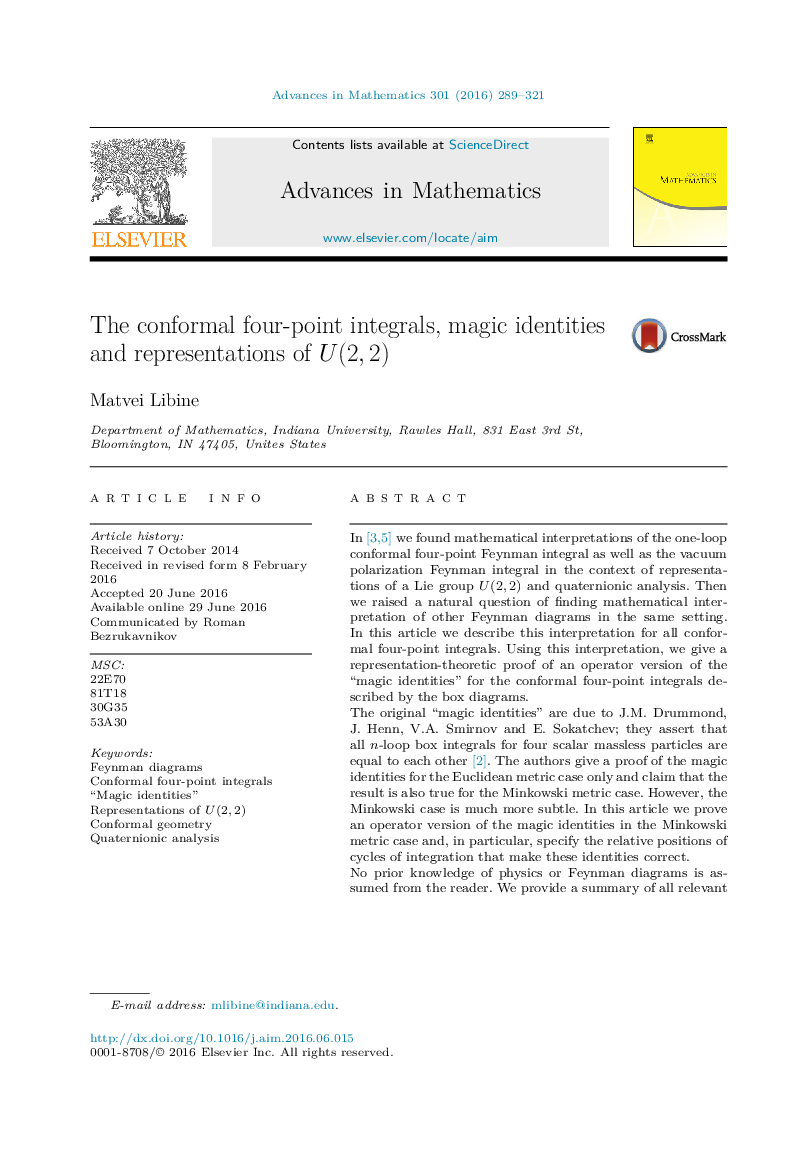| Article ID | Journal | Published Year | Pages | File Type |
|---|---|---|---|---|
| 4665046 | Advances in Mathematics | 2016 | 33 Pages |
In [3] and [5] we found mathematical interpretations of the one-loop conformal four-point Feynman integral as well as the vacuum polarization Feynman integral in the context of representations of a Lie group U(2,2)U(2,2) and quaternionic analysis. Then we raised a natural question of finding mathematical interpretation of other Feynman diagrams in the same setting. In this article we describe this interpretation for all conformal four-point integrals. Using this interpretation, we give a representation-theoretic proof of an operator version of the “magic identities” for the conformal four-point integrals described by the box diagrams.The original “magic identities” are due to J.M. Drummond, J. Henn, V.A. Smirnov and E. Sokatchev; they assert that all n-loop box integrals for four scalar massless particles are equal to each other [2]. The authors give a proof of the magic identities for the Euclidean metric case only and claim that the result is also true for the Minkowski metric case. However, the Minkowski case is much more subtle. In this article we prove an operator version of the magic identities in the Minkowski metric case and, in particular, specify the relative positions of cycles of integration that make these identities correct.No prior knowledge of physics or Feynman diagrams is assumed from the reader. We provide a summary of all relevant results from quaternionic analysis to make the article self-contained.
